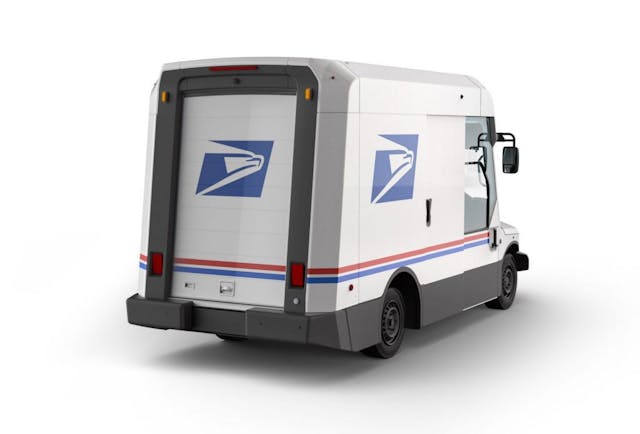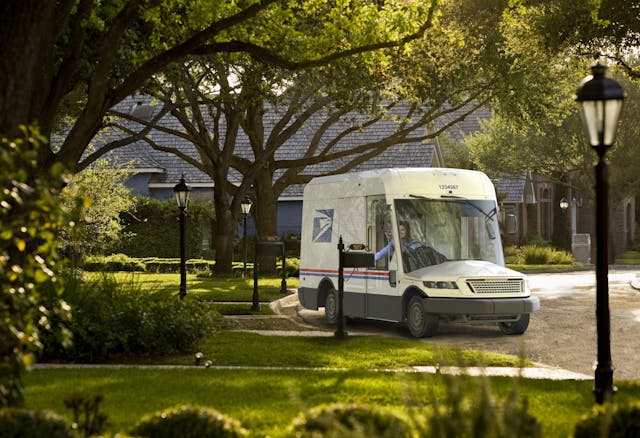USPS can only afford to electrify 10 percent of its new Oshkosh mail truck fleet
The United States Postal Service recently selected Wisconsin-based Oshkosh Defense to build the replacement for its aged LLV mail truck, and the Next Generation Delivery Vehicle was unveiled this week. Despite its mildly dopey look, the long-awaited NGDV is appropriately packed with creature comforts and essential technology. For the first time, mail carriers will get air conditioning, antilock brakes, and a backup camera on their vehicles.
Oshokosh’s new mail truck, available either with a combustion or an all-electric drivetrain, is a vast improvement upon the LLV. But as the consumer car market transitions to zero-emissions vehicles, how many EV units will USPS put into service?
For now, the split is 90/10 in favor of combustion vehicles. Automotive News reports that U.S. Postmaster Louis DeJoy, when confronted by Representative Jackie Speier (D-Calif), indicated that the USPS can only afford to electrify 10 percent of its new Oshkosh-produced fleet. “We don’t have the 3 or 4 extra billion in our plan right now that it would take to do it,” he said.

Though this 10 percent EV commitment may seem minor, the ratio won’t be set in stone. All of Oshkosh’s combustion-powered vehicles can be retrofitted with EV drivetrains—when and if the funding becomes available. “Every vehicle could be converted to electric,” said DeJoy.
The USPS fleet discussion is a helpful case study in the challenges of large-scale electrification. President Biden vowed last month to replace the 650,000-strong government with electric models, and, in addition, hammered home the need for “made in the U.S.” vehicles. USPS’s Oshkosh contract is a partial victory: The total fleet—the initial contract stipulates that USPS can order up to 165,000 mail trucks—will be made in the U.S., but, at this point, a majority-EV fleet financially not feasible. Barring dedicated federal funding, the USPS is in a tight spot: It’s already reached its $15B borrowing limit from the U.S. Treasury.

EV mail trucks make a lot of sense. City deliveries account for 83 percent, on average, of an LLV’s route. An LLV’s average number of stops on a curbside delivery route is 500, across a total distance of 20.8 miles, at an average speed of 13.6 mph. A mail truck is stopped, in fact, more often than it’s in motion. The stop-and-go pattern is highly inefficient for pure-combustion engines (hybrids are a different story), but it perfectly plays to an electric vehicle’s strength: regenerative braking to restore some charge, short trips within a relatively compact delivery radius, and low-speed driving to maximize battery life.
Just how the NGDV’s electrification rollout will happen remains to be seen, but there’s no doubt that Oshkosh’s mail truck is something postal workers have been eagerly awaiting for many years.


